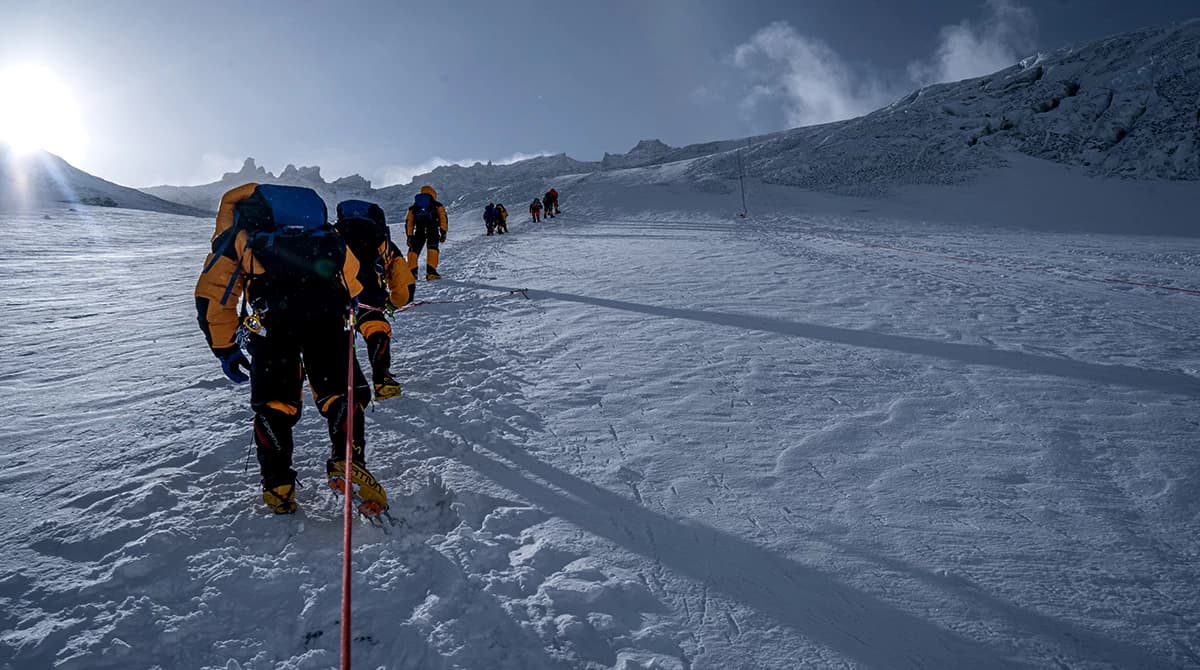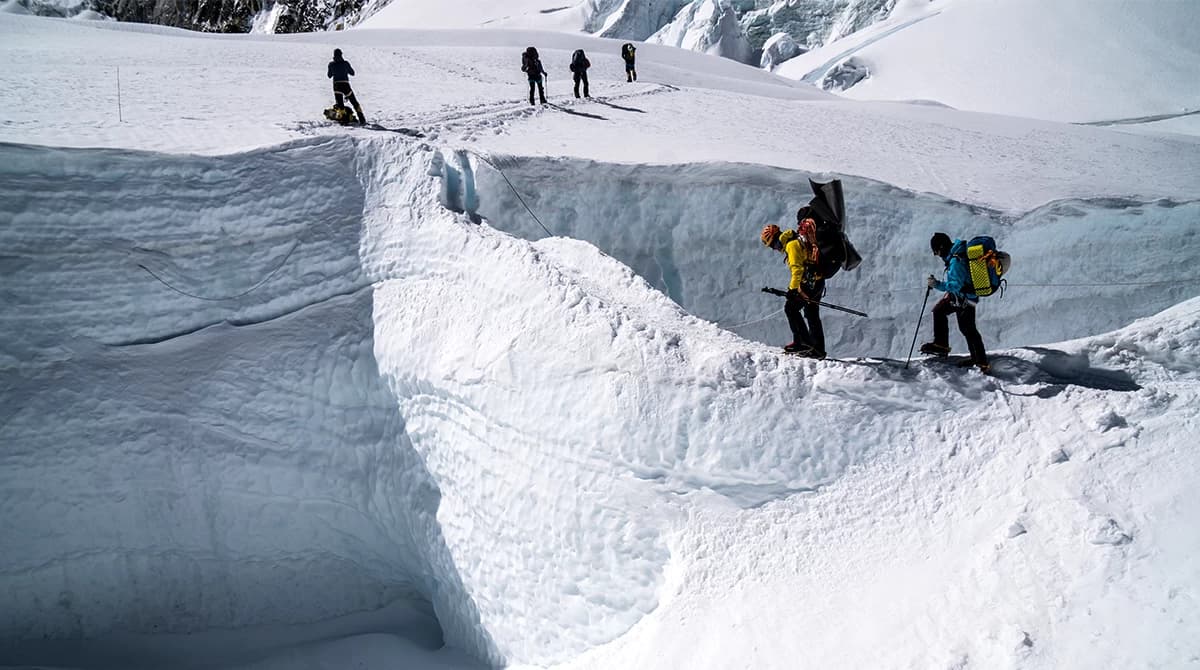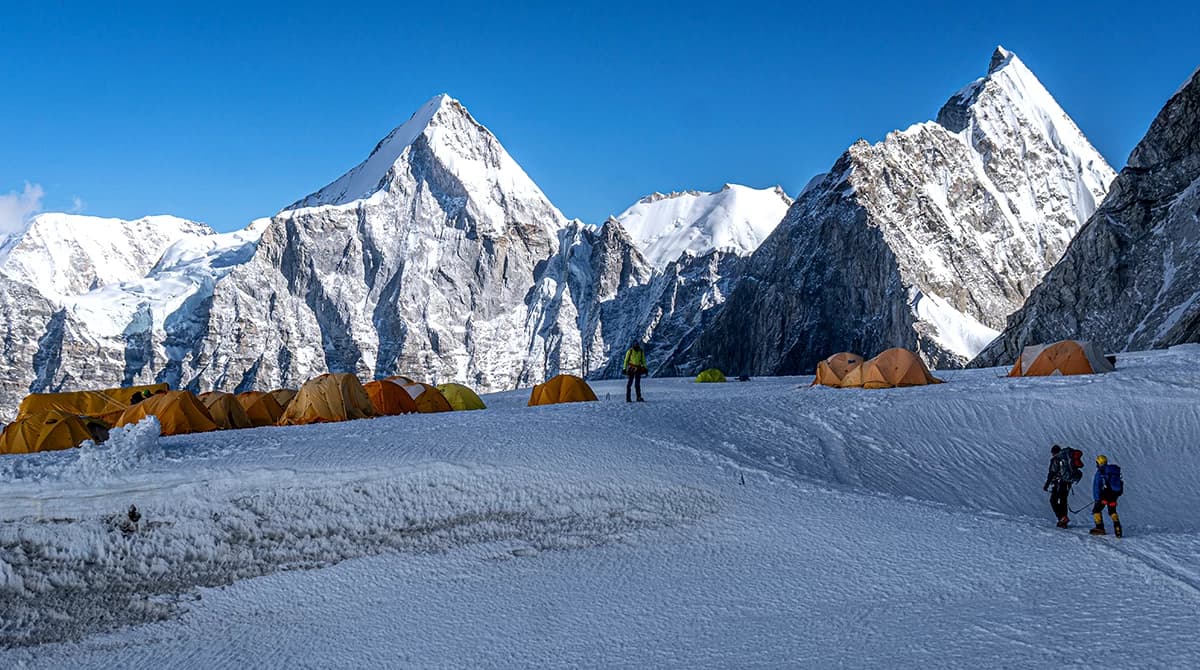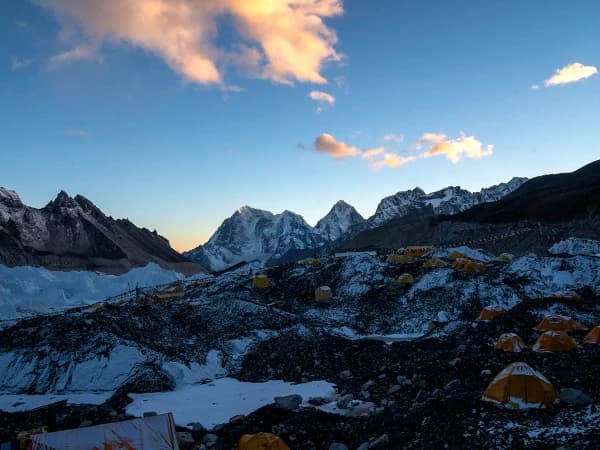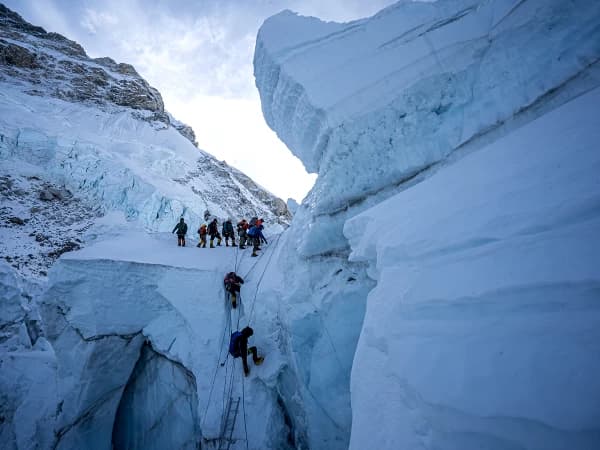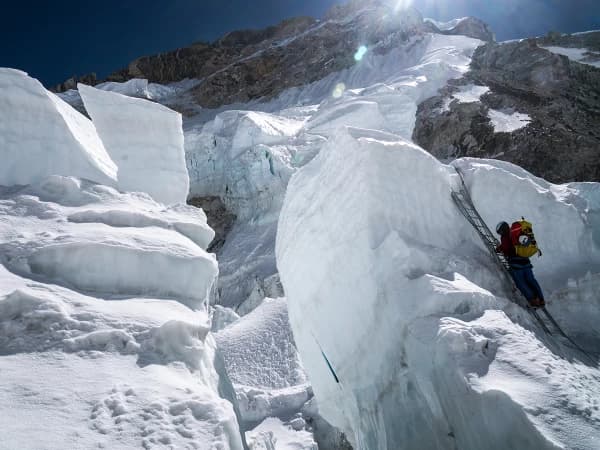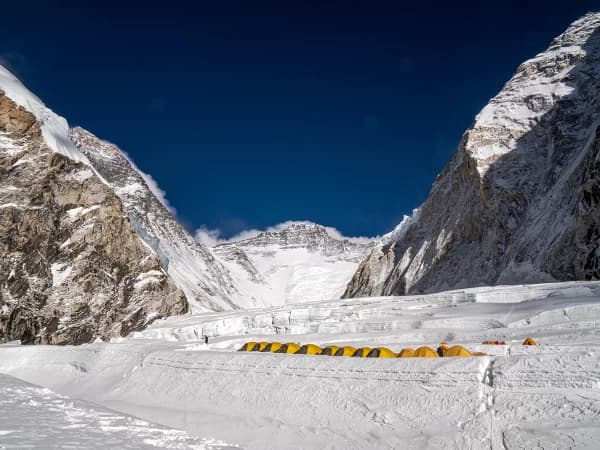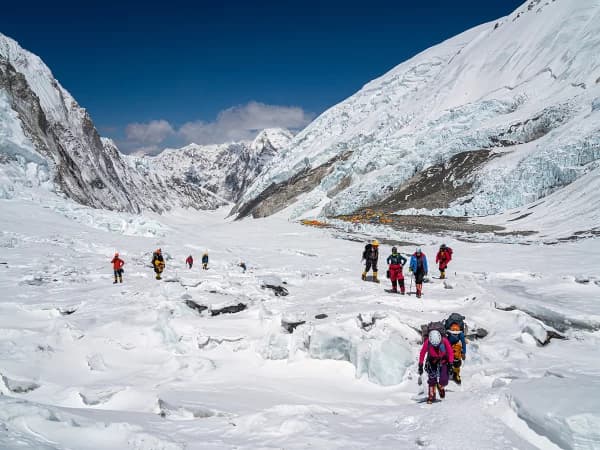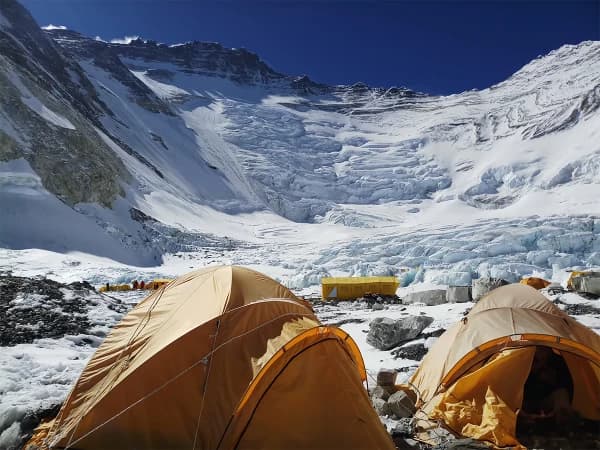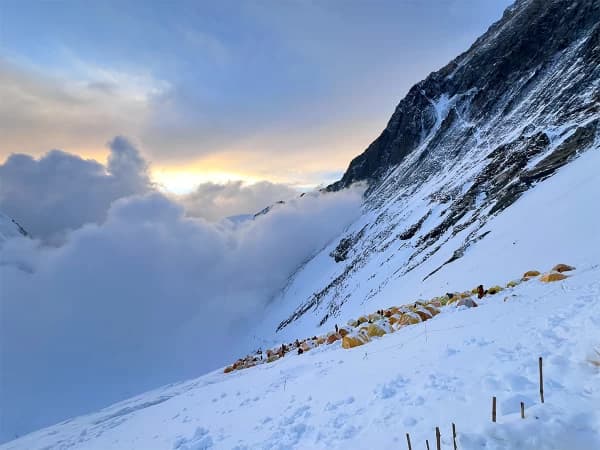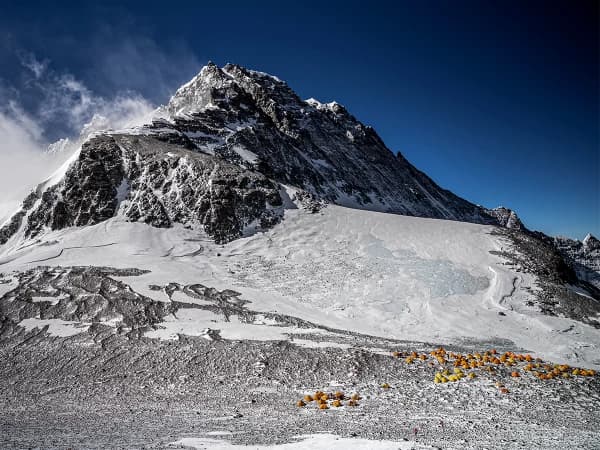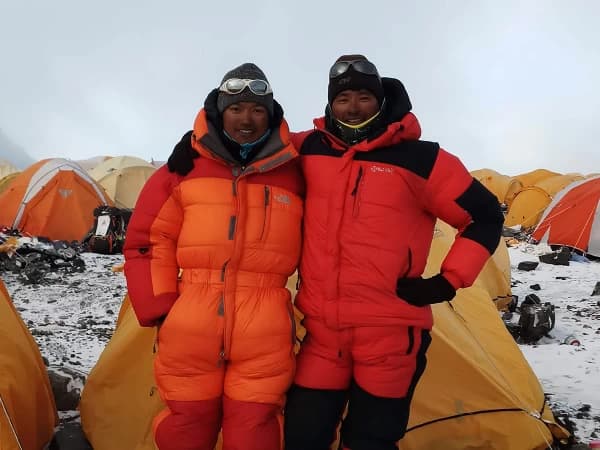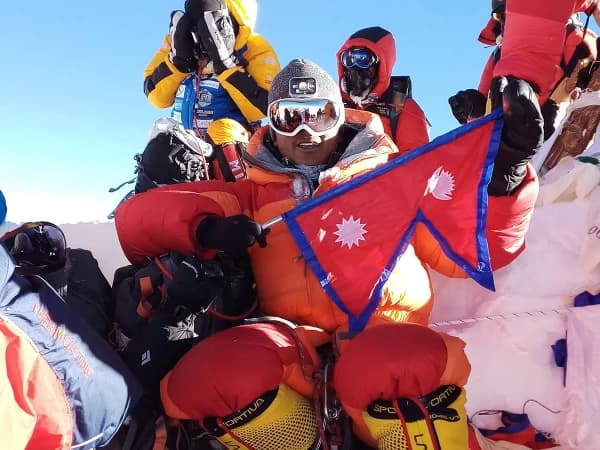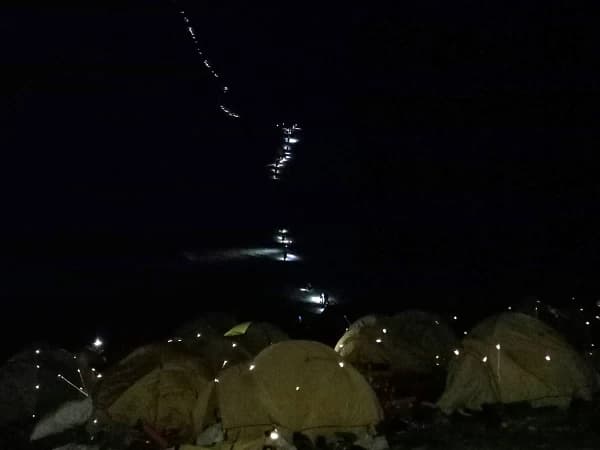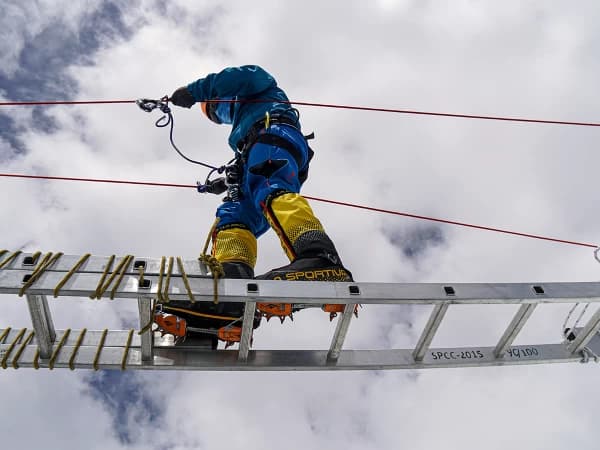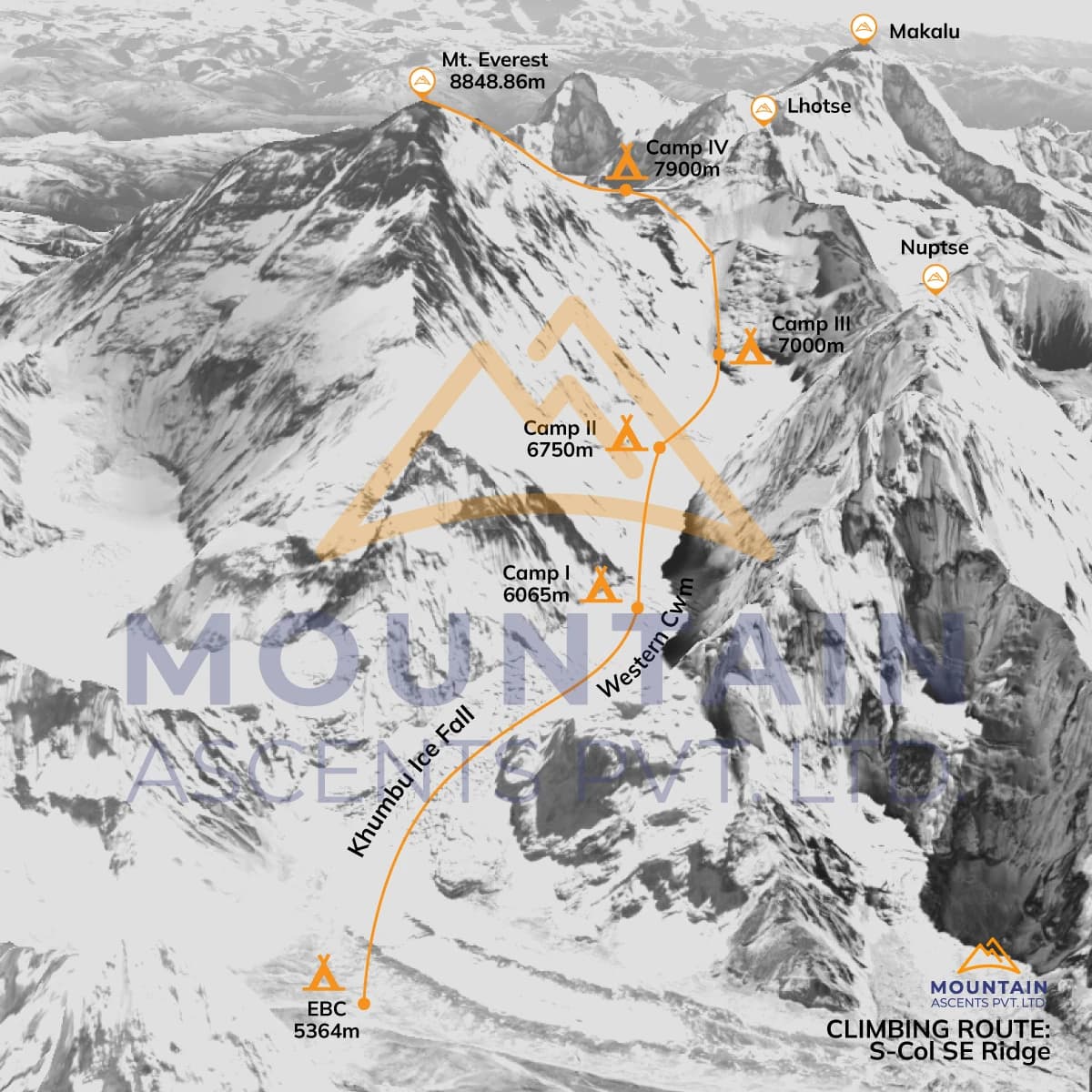The Everest Expedition is the ultimate challenge and the most prestigious mountaineering experience in the world. This journey to summit the largest mountain peak in the Mahalangur range of the Himalayas involves trekking through Everest, locally also called the Khumbu region. It is every adventurer's paradise, be it veteran expeditors, mountaineers, climbers, or novices stepping into the Himalayas for the very first time.
Beginning with a short yet scenically enriching mountain flight to Lukla, the Everest Summit Expedition is one of a kind to challenge oneself amidst the almighty Himalayas and its fickle weather. The trekking trail is gradually ascending to the alpine Himalayas, where individuals push themselves beyond their limits, marking their way through treacherous terrain including famous Ngozumpa and Khumbu glaciers, steep, rugged Himalayan routes, and high altitude demands.
Further, this route, often also referred to as the South Col Route, involves a series of camps to arrive at the summit after several days of trekking, encircling the trail once used by early mountaineers, passing through notable Himalayan villages, green valleys, and major highlights of the region. Traditional villages like Phakding, Namche Bazaar, Gokyo, and several others are a must to explore. The Kala Patthar, Gokyo Lakes, Cho La Pass, mountain glaciers, and Mt. Everest (8,848 m) are epic at least once must-see and experience destinations.
Join us for this incredible Mount Everest conquest to immerse yourself in the extensive history of the top of the world ascending, reflecting on Tenzing Norgay and Sir Edmund Hillary’s groundbreaking efforts in 1953, as well as that of Pasang Lhamu Sherpa’s marking the historic point in Nepali mountaineering history. Set to the dreamland of every adventurer now!
Trip Highlights
- Scenic flight from Kathmandu to Lukla and vice versa.
- Make your way through one of the natural UNESCO World sites of Nepal, the Sagarmatha National Park, with ample opportunity to marvel at a wide array of flora and fauna.
- Embrace the warmth of Sherpa culture, traditions, way of life, and genuine hospitality.
- Pay a visit to iconic and infamous destinations of the Everest/Khumbu region, such as Namche Bazaar, Kala Patthar, Gokyo Lake, Gokyo Ri, Everest Base Camp, and others.
- Mark your victory at challenging Cho La Pass.
- Capture the remarkable sights of the Ngozumpa and Khumbu glaciers.
- Marvel at the mythical mountain views of Lhotse, Ama Dablam, Cho Oyu, Makalu, and others, including Mt. Everest perched above the sky.
- Follow the footsteps of the legendary Sir Edmund Hilary and Tenzing Norgay Sherpa.
- Embark on the infamous classic Everest Base Camp Trek and conquer the highest mountain in the world itself, Mt. Everest (8,848 m).
- A golden chance to experience both the tea house and camping Himalayan experience in one single expedition, and many more.
What makes the Everest Expedition special?
Everest, the highest point on Earth, has attracted adventurous souls worldwide for almost a century, since its opening for foreigners in 1949 with its first successful ascent in 1953. The expedition to summit the peak, renowned for its natural appeal and history, is hence an extremely immersive experience of true human endurance and ambition. Climbers not only get to test themselves mentally and physically but also get to marvel at the breathtaking splendor of the Himalayas, including towering peaks like Lhotse, Nuptse, and Makalu.
The embarking is steeped in history with countless stories of perseverance and achievement. Climbers are likely to encounter Altitude Mountain Sickness (AMS), frequently changing weather conditions, harsh cold in the upper Himalayas, and making their way through treacherous routes. Hence, months of preparation and weeks on the mountainous terrain as you are struck with the unique Sherpa culture and the sacred landscape of the Khumbu Valley are a must, providing the entire journey an edge to add to the bucket list seeking an extraordinary adventure of lifetime as briefed below:
The never-ending panorama of the Himalayas and the highest mountain in the world, Mt. Everest (8,848m)
The Himalayan voyage and expedition route to Everest is nestled amidst several sky-perched iconic mountain ranges, including Lhotse, Nuptse, Ama Dablam, and others visible right from the starting point of the trek, Lukla. Throughout the journey, trekkers, climbers, and expeditors are surrounded by heavenly mountain vistas that get refined as you move closer and closer to your ultimate destination, Mt. Everest itself.
Rising majestically above the clouds as if entering deep into the heavens, Mt. Everest, also called Sagarmatha locally and known as Chomolungma, translating to “Mother Goddess” in Nepal, is both a visual retreat and a constant reminder of your main purpose, objective, and aim of the expedition. The landscape here features shimmering glaciers, rugged ridges, and a serene valley below, combined with the sheer scale and beauty, which promises you an unparalleled experience like never before.
Trace the culturally and historically significant Himalayan route
Every mountain carries an immersive historical legacy that mesmerizes mountain lovers and climbers from around the globe, where Everest Expedition is just a fantastic journey to let yourself free in the majesty of the top of the world. The legacy of the expeditors and mountaineers, especially that of Sir Edmund Hillary and Tenzing Norgay's successful first ascent in 1953, adds much to the profound historical importance of the route that has made Everest earn its name as a symbol of human exploration and determination.
Similarly, the expedition to Everest is through the iconic Khumbu Valley, home to the Sherpa people, celebrated for their superhuman mountaineering skills, adaptation power to the low oxygen, high altitude levels, and their enriching Buddhist traditions resembling that of Tibetan Buddhism, and way of life. Along the trekking and climbing trail to Everest, mountaineers come across several ancient monasteries, such as Tengboche, typical Sherpa dwellings, offering an insider insight into the customary lifestyle shaped by the gigantic Himalayas.
Therefore, this Himalayan expedition to conquer Mt. Everest is a must to seize the opportunity to be at the historical Himalayan route offering a blend of natural grandeur with rich Sherpa cultural heritages!
Wildlife haven and incredible scenery
This alpine jaunt to arrive at the Everest summit is through one of the highly protected Himalayan National Parks of the country, the Sagarmatha National Park. Named after the mountain peak, Mt. Everest/Sagarmatha, the park is home to a wide array of flora and fauna stretched over an area of 1,148 square kilometers. Established in the year 1976, the park area boasts more than 208 species of birds, including elusive snow leopards, musk deer, Himalayan tahr, and colorful pheasants.
It is also the first national park inscribed at the UNESCO World Heritage Site, providing you with ample opportunity for bird and other wildlife watching as you traverse the trail to the Everest region, including the Climbing journey to Everest that also unveils the unique natural beauty with each step. The journey to Everest passes through varying yet stunning landscapes, from lush subtropical forests of oak, pine, juniper, and rhododendron to alpine meadows, high-altitude deserts, and vast glaciers and Ngozumpa Icefall.
The majestic snow-clad Himalayan peaks Lhotse, Nuptse, Ama Dablam, and others guard the route, enhancing the beauty of dramatic vistas and creating an exceptionally beautiful fusion of pristine wilderness and otherworldly Himalayan beauty moving along the Dudh Koshi River.
Challenge, Personal Growth, and Achievement
The Everest Expedition is a testament to immeasurable personal growth and achievement. Trekkers’ endurance, strength, and skill will also be tested in the extreme altitude, harsh weather conditions, and some technical difficulties, particularly in the Cho La Pass, Gokyo Ri, and Everest itself. This Himalayan pilgrimage also includes navigating the Khumbu Icefall in thin air over 8,000 m, which is not only physically demanding but also requires resilience, self-discipline, and perseverance.
Individuals push themselves beyond their limits with mandatory deep inner strength, leading to extensive self-reflection, growth, and transformation along with a real sense of achievement. Hence, this challenging endeavor is often considered the pinnacle of mountaineering careers and life-changing experiences.
Well supporting infrastructure
Over the years, the Everest Summit Expedition and trekking routes have improved significantly. The hiking trails are well-trodden and feature numerous tea houses, local lodges, and guest houses with reliable accommodation and meal options. Supported by experienced guides in logistical and other requirements for any sort of visit to the Everest Trekking region, there are high chances of the journey’s success making it accessible for a wide array of adventure lovers.
Over more than seven decades, the routes to the summit have been carefully upgraded with fixed ropes, ladders, and several camps. The company of highly experienced guides adds much to the overall expedition, along with the essential support from your trustworthy expedition companies, such as Mountain Ascents, who share their years of extensive knowledge of acclimatization strategies, safety tips, and logistics management.
Further, the base camps are also well equipped with much-needed communication facilities, medical tents, supply stations for food, shelter, and oxygen that aid a lot to mountaineers and climbers to concentrate on their summit goals, which, however, does not particularly diminish the potential challenge of high altitude and other unforeseen circumstances.
Why is the 58-day itinerary the best route for the Everest Expedition?
A typical 58-day itinerary for an Everest Himalayan Expedition starts with arrival in Kathmandu followed by a short flight to Lukla and trekking through the Khumbu Valley, rich in pristine scenery, culture, traditions, and distinctive dialects conserved and protected for centuries. Climbers generally ascent through different altitudes, passing by several traditional Himalayan villages and green valleys such as Phakding, Namche Bazaar, also called the gateway to Everest, Machhermo, Gokyo Lake and Valleys, Dzongla, and others until they made it to the Everest Base Camp I at an altitude of 5,364 m.
These villages and valleys are also places for acclimatization, specifically Namche Bazaar and Gokyo, so you do not miss any of the major highlights that Everest has to offer due to acute mountain sickness (AMS). Here, Gokyo Lake, Gokyo Ri, Cho La Pass, Kala Patthar, Everest Base Camp, and the summit itself stand out as challenging yet equally rewarding endeavors. Once you arrive at the base camp, you will ascend to Everest peak at an altitude of 8,848 m above sea level, the highest point in the world, through various high-altitude camps between 14-54 days with several rest days and training sessions before a final summit push. The expedition ends with a descent back to base camp, Lobuche, and a helicopter flight back to Kathmandu for departure.
While shorter itineraries for the Everest Expedition are also possible, a 58-day itinerary allows for a proper gradual elevation gain, mitigating the chances of altitude sickness and increasing the summit's success; hence, it is considered the best route for Everest exploration and climbing. Further, this extended timeline also maximizes the chances of stable water for the summit push, including multiple rotations between the base camp and higher camps that you can access through preparation, skill training, equipment checks, and mental strengthening, providing a better balance between efficiency, safety, and flexibility; hence, this is the most optimal itinerary for climbing Everest.
58-day Everest Expedition Cost for 2024/2025
The price for the Everest Expedition package can range anywhere from USD 35,000 to USD 70,000 based on the level of service of your preferences, the type of expedition (fully guided or semi-supported), and the kind of operator you have chosen for the journey.
Where a well-sorted trip from us, Mountain Ascents, a locally based trekking, tour, and adventure operator covers expenses of most essential expedition logistics and requirements, such as permit fees, meals, food, base camp oxygen, communication equipment, transportation, guides, porters, and sherpa services.
Further, the Mount Everest summit expedition package cost also includes climbing gear training, and pre-trip costs whereas insurance and medical support can slightly add a bit to the overall cost!
